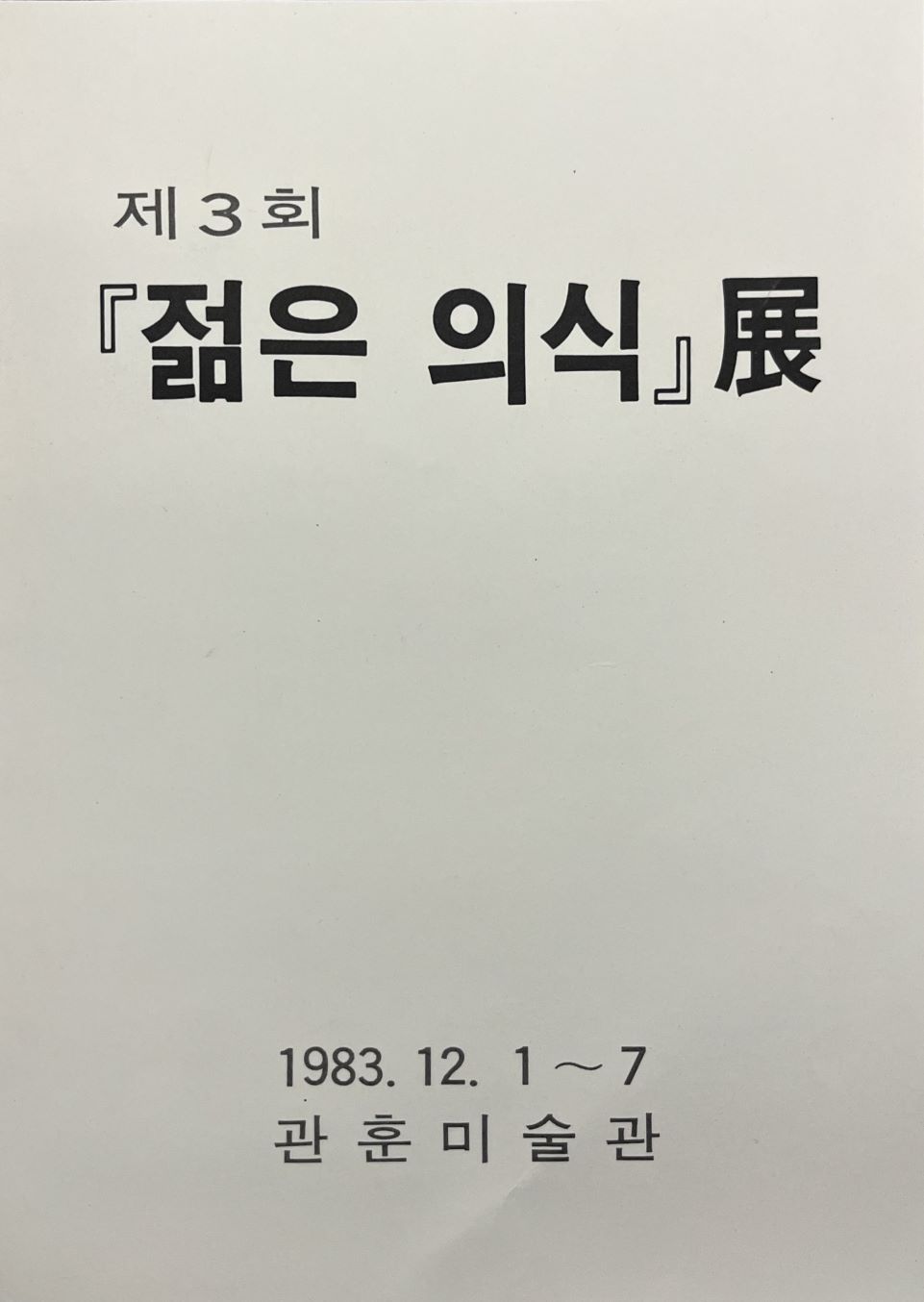
Young Minds
* Source: MMCA
Related
-
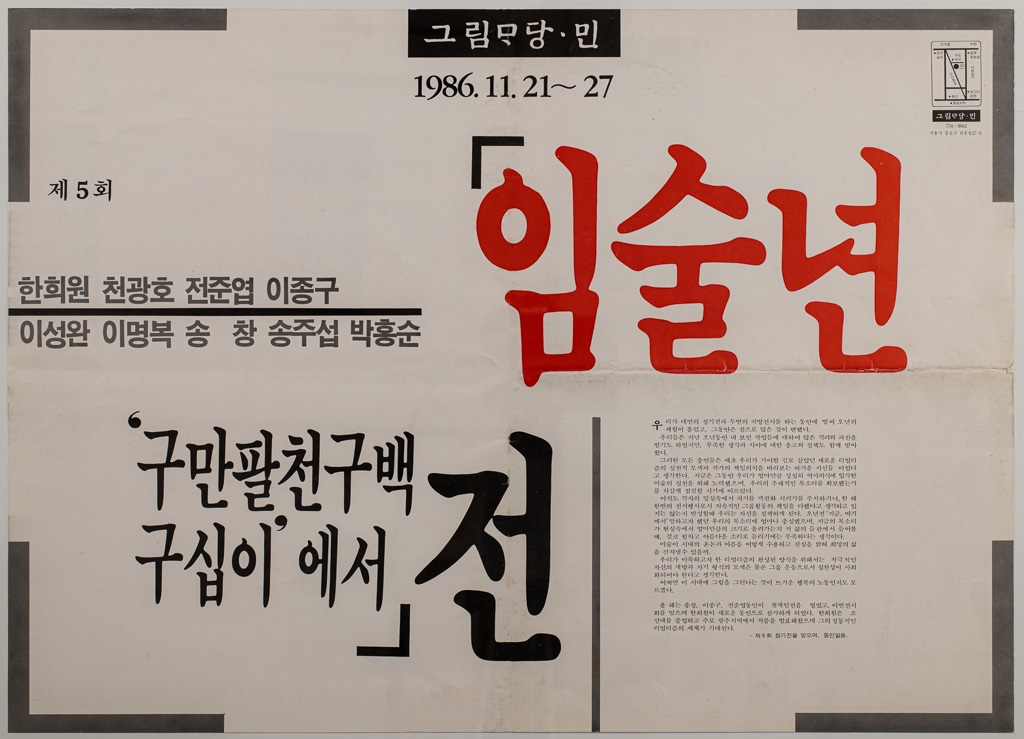
Imsulnyeon
Imsulnyeon (literally, “Imsul year”) was a small Minjung art collective founded in 1982 and active until 1987. Its official name is “Imsulnyeon, from Ninety-eight Thousand, Nine Hundred Ninety-two.” Imsulnyeon started in the late 1970s when Park Heungsoon, Chun Junyeop, Lee Jonggu, and Hwang Jaihyoung, who were students returning to the Department of Painting at Chung-Ang University, held a discussion meeting. They emphasized the significance of the “homogeneity of consciousness” and believed that the “basic skills of a painter” should be considered in depth. Upon the recommendation of their junior Lee Myoungbok and other internal members, seven artists including Song Chang (Chosun University) and Chun Kwangho (Yeungnam University) held the inaugural exhibition in October 1982 at the Duksoo Museum. Imsulnyeon was a group that regarded highly the existential and realistic thesis of the “here and now.” “Imsulnyeon” corresponds to the year 1982, and “Ninety-eight Thousand, Nine Hundred Ninety-two” is the gross area of South Korea. In their manifesto, the Imsulnyeon states that “the perspective we wish to hold is the naked reality or hidden truth of our time” and that “we will honestly visualize the uncertain transitional situation that exists in the real world.” The regular exhibition The Second Imsulnyeon, from Ninety-eight Thousand, Nine Hundred Ninety-two was held in November 1983 at the Arab Art Museum, and in April of the same year it was re-held in Daegu on the invitation of the Daegu Su Gallery. In January of the following year, another invitational exhibition was held at the Academy Art Museum in Gwangju, and in November, the third regular exhibition was held at Baeksang Memorial Hall. Imsulnyeon held its fourth regular exhibition in October 1985 at the Hangang Museum and the fifth edition in November at Min Art Gallery (Geurim Madang Min). After an invitational exhibition at Taebaek Gallery in Daegu in January 1987, Imsulnyeon disbanded with the last regular exhibition at Haein Gallery in Busan. In the second regular exhibition, Kwon Yonghyeon, Song Juseop, and Jo Jinho newly participated in the exhibition; in the fourth, Lee Seongwan; and in the fifth, Han Huiwon joined. They wanted to paint the reality that they had seen with their own eyes and experienced. Therefore, when the inaugural exhibition ended, they dispersed in search of their own themes. Park Heungsoon produced Boxer; Lee Myungbok, Iteawon; Song Chang, Division; Lee Jonggu, Oji-ri; Chun Junyeop, Urban Landscape; Chun Kwangho, Generation Landscape; and Hwang Jaihyoung, Taebaek Coal Mining Village. The artists who later joined the Imsulnyeon also devoted themselves to making paintings with distinct themes. Most of their works were enormous in size and showed a dense sense of completeness. The emergence of Imsulnyeon, founded in 1982, attracted great attention from other artists from the Minjung art scene by successfully solving the problem of “reality” at a time when the aesthetics of Minjung art were just budding. However, it was disbanded in 1987 due to different reasons, such as difference in views among its members followed by internal conflicts within the National Art Association [Minjok misul hyeopuihoe] and issues in visual representation.
-
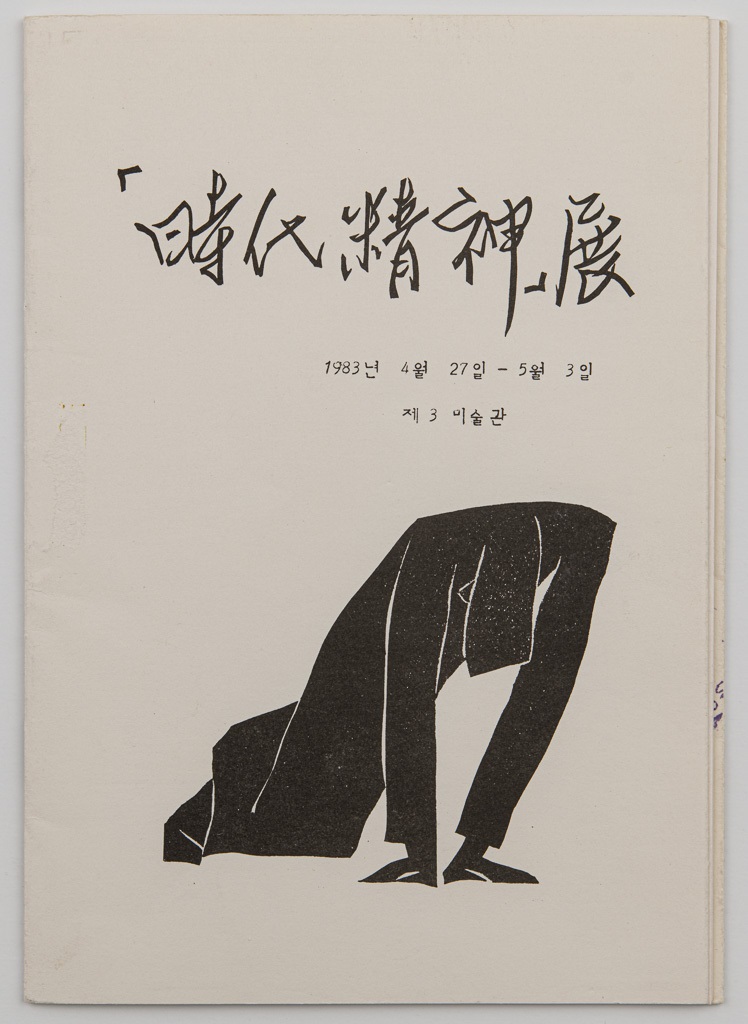
Sidaejeongsin (Zeitgeist)
Sidaejeongsin (Zeitgeist) is the first collective group formed in 1983 and remained active until 1987. In the early spring of 1983, Kim Hyeonsu, the director of the Third Museum of Art, asked Park Geon to curate an exhibition to make used of the cancelled exhibition period. Together with Moon Youngtae, Park Geon formed the Committee of Sidaejeongsin and tried a collective that gathered for exhibitions and publications and then dispersed. Moon oversaw organizing exhibitions, and Park assumed the task of publications. Moon and Park first met in April 1980 when Moon visited Park’s exhibition Strength in Busan. The two became close when Park came to Seoul and participated in exhibitions Young Minds and Traverse. Their goal was to weave together the sporadic small art movements of the early 1980s with a larger “cultural force.” Their intentions can be found in the following sentence printed in small letters on the cover of the mook (magazine-book) Sidaejeongsin: “’life’ to run toward from all directions; touch, pinch and embrace.” Park Geon stated that the spirit of an artist who sees through the times is "Zeitgeist.” In the preface of the first volume of Sidaejeongsin (Zeitgeist), the art critic Kim Yoon-Soo explained that “sidaejeongsin (zeitgeist) comes from the insight and recognition that the spirit making up our lives today is indeed in a state of corruption and irreversibility” and that “zeitgeist is the awakened spirit leading national history against all the phenomena, mindsets, institutions, and systems, all of which prevent all human beings from living a dignified life.” The first Sidaejeongsin exhibition was held in April 1983 at the Third Museum of Art. The fourteen artists who participated in the exhibition were Kang Yobae, Ko Kyeong-hun, Kim Bojung, Kim Jinyeol, Moon Youngtae, Park Geon, Park Jae-dong, Ahn Changhong, Yun Yeogeol, Lee Nagyeong, Lee Chulsoo, Lee Taeho, Jung Bocsu, and Choi Minhwa. Park Geon, who had edited textbooks at a university, edited and published the first volume of the mook Sidae jeongsin, which also served as an exhibition catalogue, in 1984. From then on, the group name, exhibition name, and mook name were collectively referred to as “Sidaejeongsin.” By 1987, they had organized a total of five exhibitions and published three volumes of the Sidaejeongsin. The theme of the first volume was “The Vitality of the Minjung Art Movement,” that of the second volume was “The Aesthetics of Liberation: Murals, Photography, Prints, and Cartoons,” and that of the third volume was “Sexuality in Our Time.” The second edition of the Sidaejeongsin exhibition traveled to Maek Gallery (Busan), Ijo Gallery (Masan), and Maekhyang Gallery (Daegu). The third edition was a print exhibition organized in collaboration with the Art School for Citizens. The fourth edition was held at Min Art Gallery, and the fifth edition was held on the theme of “what do our children draw” at the same place. In 1985, the National Art Association (Minjok misul hyeopuihoe) was established. As it published its bulletin in 1986 and Min Art Gallery, an exhibition space specializing in Minjung art was established, the Committee of Sidaejeongsin concluded its activities with the fifth exhibition. Afterwards, Moon Youngtae devoted himself to the activities of the National Art Association, and Park Geon engaged himself in the activities of the National Teachers’ Council for Democratic Education Promotion [Minju gyoyuk chujin jeonguk gyosa hyeopuihoe].
-
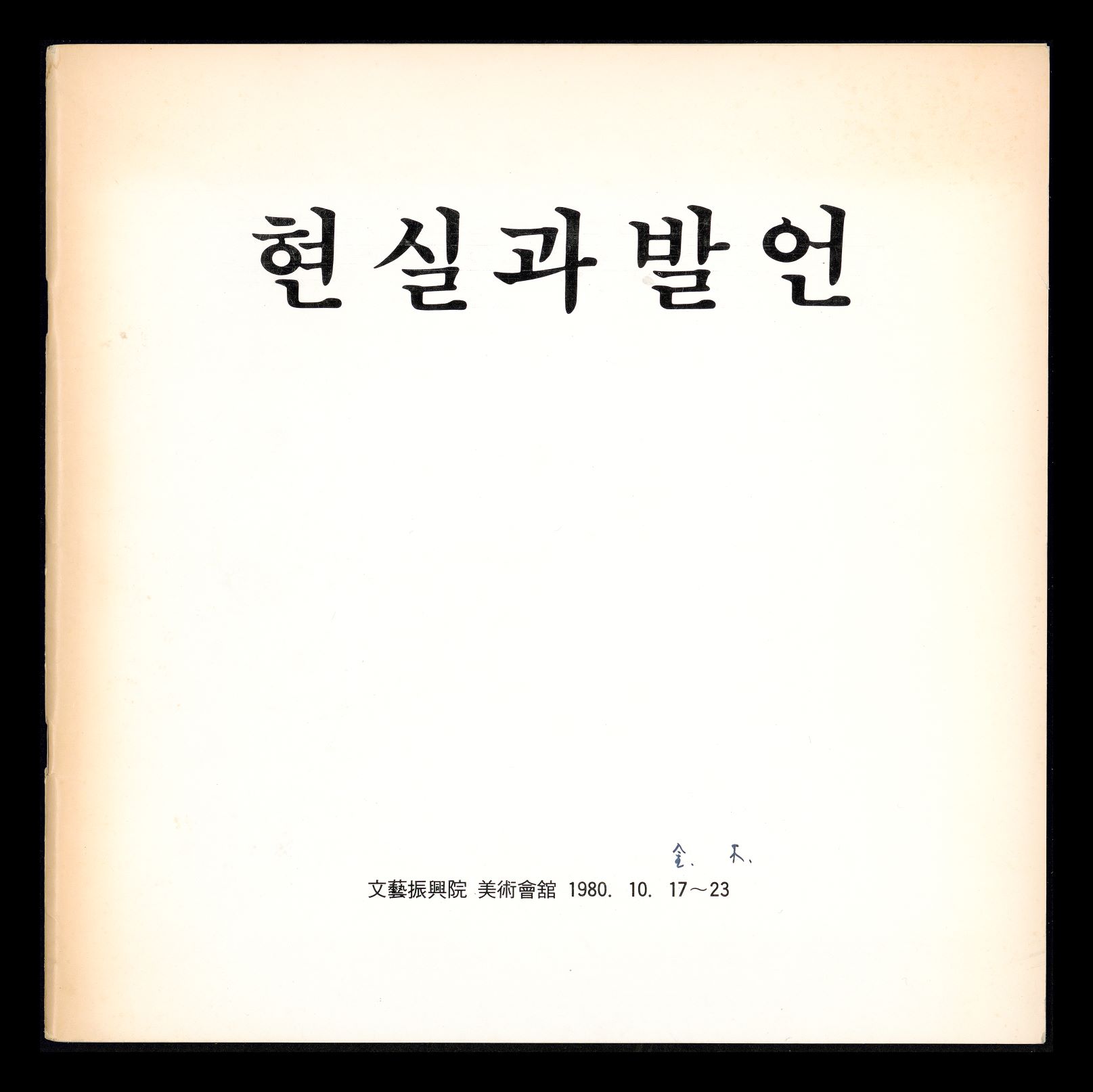
Reality and Utterance
A group formed in 1979 by artists and critics that criticized the contradictory nature of industrial society and the conservatism of the art community. The group formed during preparations for an exhibition to mark the 20th anniversary of the 1960 April Revolution. The group emphasized a realistic attitude, namely that art must depict reality and reveal the underlying contradictions of society. The group borrowed from or copied pop culture images, and also used photography, prints, comics, reproductions, and collages. Such methods were considered a means to help critically address the overabundance of visual images in contemporary Korean society, the issues of urbanization, and the colonial nature of Korean culture.
Find More
-
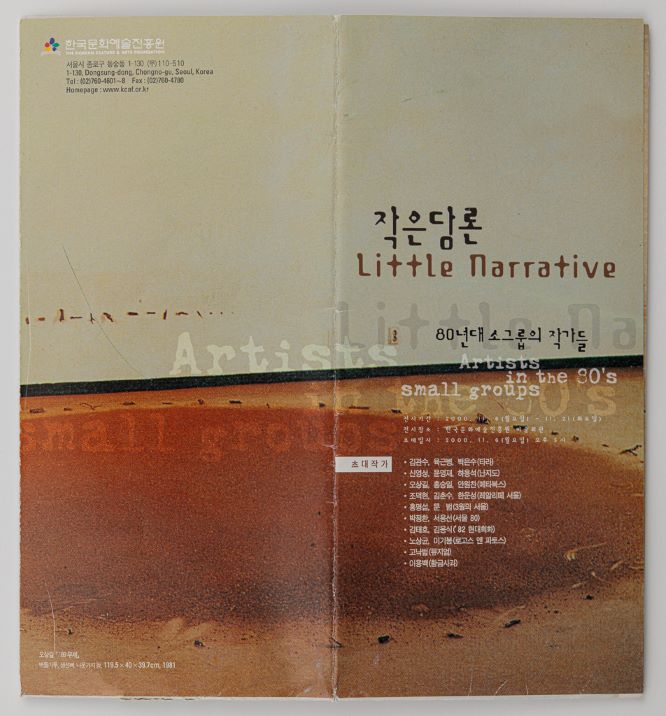
Small group movement
A term describing the tendency of many artists in the 1980s to work in small groups, in which the application of many diverse methods, attitudes and values in mediums such as painting, sculpture and installation was common. These groups associated with neither the established modernist abstract art community or the Minjung Art community, which formed the primary two ideologically and formally opposed movements of the 1980s. Instead, artists within these small groups focused on individual approaches to production based on situational contingency, and deliberately declined to develop into larger organizations, unlike the artists of previous generations. The formalization, commercialization, and globalization of the art community ultimately resulted in the disbanding of most of the small groups during the 1990s. However, the works produced within these groups were indicative of the Korean post-modernist movement that was to come.
-
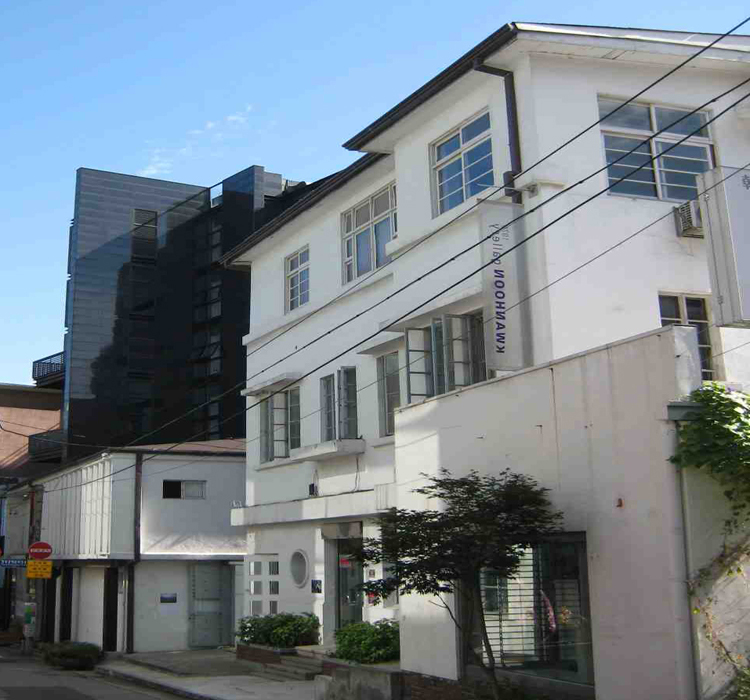
Kwanhoon Gallery
A gallery which opened in 1979 in Insa-dong. Its name was originally the Kwanhoon Art Museum, but this was changed to Kwanhoon Gallery in the early 1990s following the Museum and Art Gallery Support Act. In the 1980s, the gallery held exhibitions featuring prominent art organizations such as Ecole de Séoul, Logos & Pathos, and Meta-Vox, as well as the Museum exhibition. The gallery became a foundational platform for experimental and avant-garde contemporary art in Korea.






